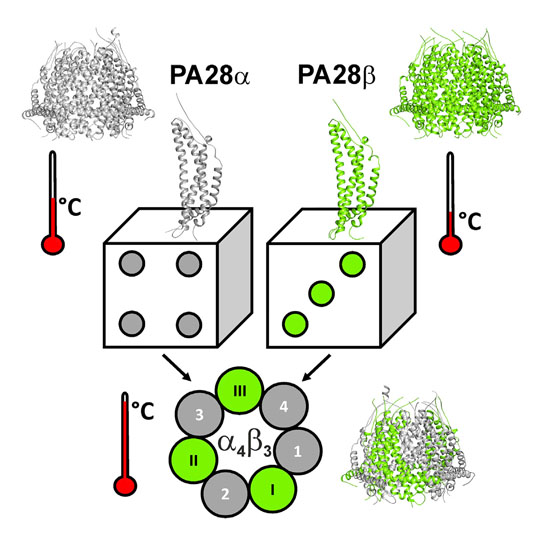The Mammalian Proteasome Activator PA28 Forms an Asymmetric α4β3 Complex
31-Aug-2017
Structure, Volume 25, Issue 10, p1473–1480.e3, DOI: https://doi.org/10.1016/j.str.2017.07.013
Structure, online article
The heptameric proteasome activator (PA) 28αβ is known to modulate class I antigen processing by docking onto 20S proteasome core particles (CPs). The exact stoichiometry and arrangement of its α and β subunits, however, is still controversial. Here we analyzed murine PA28 complexes regarding structure and assembly. Strikingly, PA28α, PA28β, and PA28αβ preparations form heptamers, but solely PA28α and PA28αβ associate with CPs. Co-expression of α and β yields one unique PA28αβ species with an unchangeable subunit composition. Structural data on PA28α, PA28β, and PA28αβ up to 2.9 Å resolution reveal a PA28α4β3 complex with an alternating subunit arrangement and a single α-α interface. Differential scanning fluorimetry experiments and activity assays classify PA28α4β3 as most stable and most active, indicating that this assembly might represent the physiologically relevant species. Together, our data resolve subunit composition and arrangement of PA28αβ and clarify how an asymmetric heptamer can be assembled from two highly homologous subunits.











